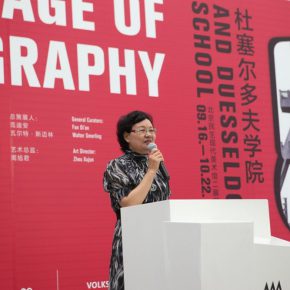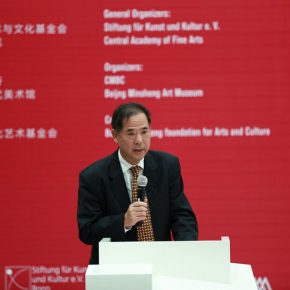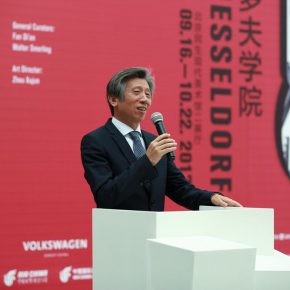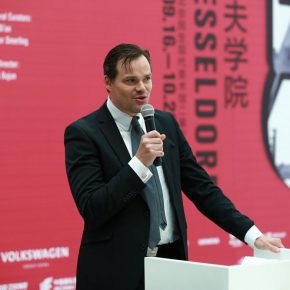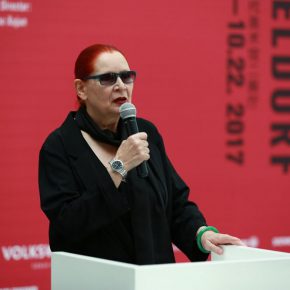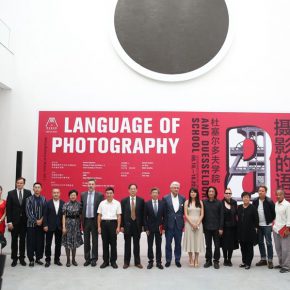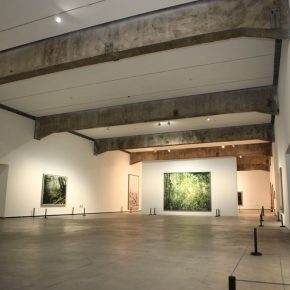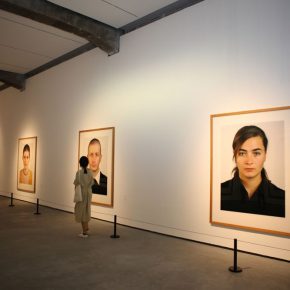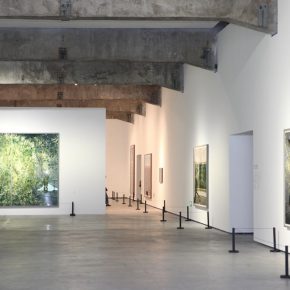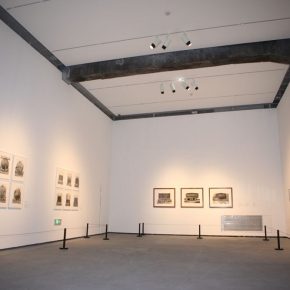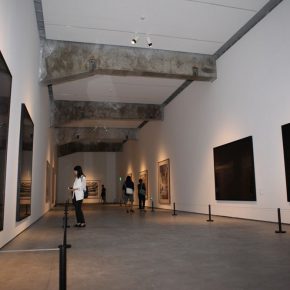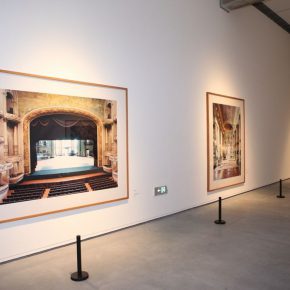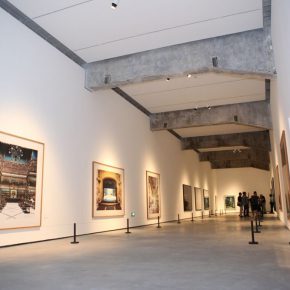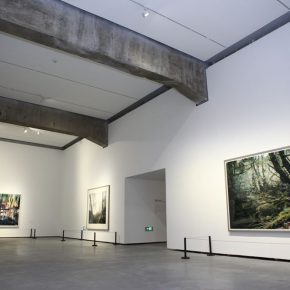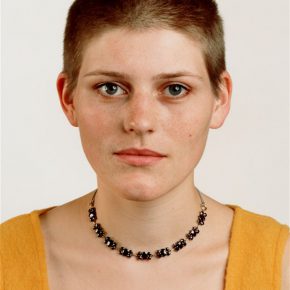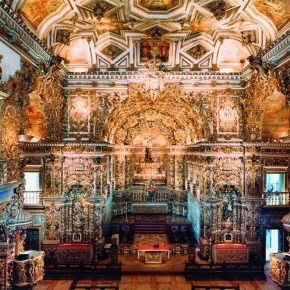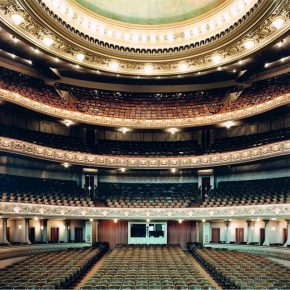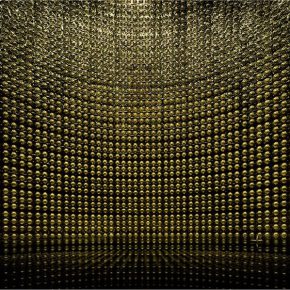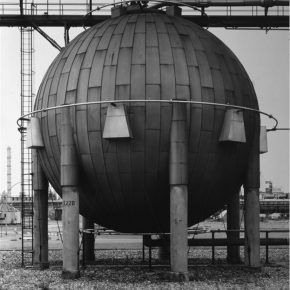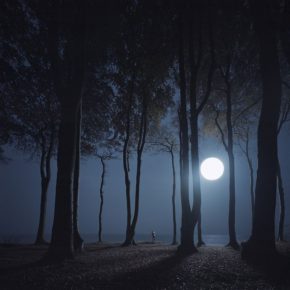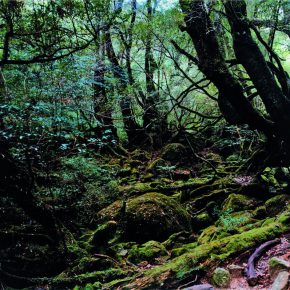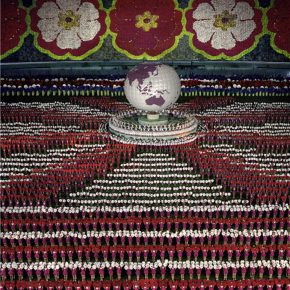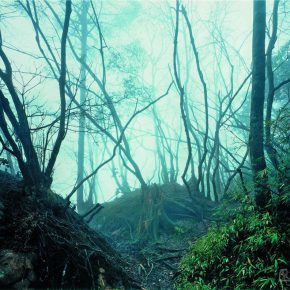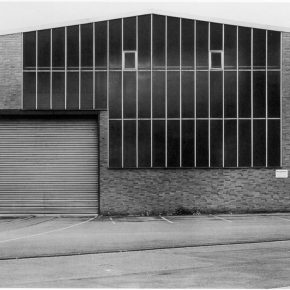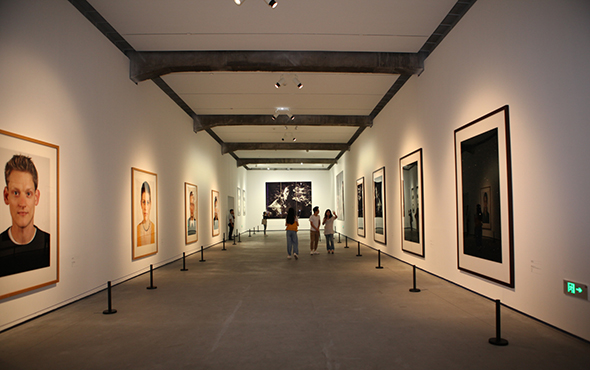
On the afternoon of September 15, 2017, “The Language of Photography and the Düsseldorf School”, part of the series of exhibitions on “Deutschland 8: Deutsche Kunst in China” opened at Beijing Minsheng Art Museum. It is organized by Stiftung für Kunst und Kultur e.V. (Foundation for Art and Culture Bonn) and the Central Academy of Fine Arts, co-organized by China Minsheng Bank, Beijing Minsheng Art Museum and Beijing Minsheng Culture and Art Foundation. This exhibition highlights the presentation of contemporary German photographic art as represented by the Düsseldorf School, which is the first time for the contemporary German photographic works to be systematically displayed in China.
Zhou Xujun, Director of Beijing Minsheng Art Museum presided over the opening ceremony of the exhibition, Enrico Brandt, cultural counselor of the Embassy of Germany in China. Fan Di’an, President of Central Academy of Fine Arts, Chen Guoqiang, Director of the Office of the China Minsheng Bank and Director of the Minsheng Art Institution Administration Committee, Li Wenhua, Chairman of the Board of the Directors of Beijing Minsheng Art Museum, Walter Smerling, Chairman of the Stiftung für Kunst und Kultur e.V, An Yuanyuan, Deputy Director of the National Art Museum of China, Su Xinping, Vice President of Central Academy of Fine Arts, Wang Chunchen, Deputy Director of CAFA Art Museum, Yue Jieqiong, Executive Director of the Imperial Ancestral Temple Art Museum, Gao Peng, Director of Today Art Museum, Yan Shijie, Director of Red Brick Art Museum, Gu Yan, Director of Yuan Art Museum, Stephan Frucht, Director of Siemens Art Project, Katharina Sieverding and Andreas Mühe, representatives of the participating artists, artists Wang Chuan, Miao Xiaochun and Wang Qingsong, as well as critic Yang Xiaoyan attended the opening ceremony.
“The Language of Photography and the Düsseldorf School” exhibited a total of 53 pieces of 7 contemporary German photographers, and the majority of these photographers are representatives of the Düsseldorf School. It takes the photographers Bernd and Hilla Becher as the core to present a series of photographs of architecture created by the well-known couple in the 1970s. In Germany, the emergence of the Düsseldorf School marked a shift in the paradigm of photography as a medium, and Bernd and Hilla Becher, as the leaders of the Düsseldorf School, took the stringent and stylized black and white photographs, maintaining an objective sobriety. In the rapid social development in Germany, the photographers were keenly aware of the changes in the times, they shot a large number of objects doomed to extinction in the name of progress, such as large factories, gas tanks, and water towers, etc. In many cases, the gelatin silver prints are presented in blocks of 6, 9, or 15 individual images of the same type of structures.
Throughout the 1960s, the school of Becher was almost seen as synonymous with German photography, while Bernd and Hilla Becher influenced an entire generation of photographic artists. The internationally acclaimed photographic artists Andreas Gursky, Candida Höfer, Thomas Ruff, Thomas Struth, whose works are also on show at the exhibition, once learned photography from Bernd Becher.
In the exhibition hall, we can see Andreas Gursky’s large-scale works of photography. The works from “Bangkok” series (2011) are characterized by his use of digital manipulation, with which he also questions the vitality of photographic images as documentation; “Paris, PCF” from 2003 and “Kamiokande” from 2007 both have adopted a contrast between the large space and small items, especially the latter, the enormous dimensions of the space can be discerned by the miniscule technicians in the tiny boat along the lower right edge of the photograph, which is considered an ambiguous statement about the beauty of the potential danger of modern science.
Photographer Candida Höfer, who has been strictly trained by the Düsseldorf School, has been photographing publicly accessible, highly representative interior spaces around the world, focusing on the interiors of museums, theaters, and libraries, while her photographs are characterized by an unusually rich visual grandeur and a magically tranquil power of expression. It features Thomas Ruff’s portraits series and Stars series, the former are large-size neutral portraits, which are from the field of documentary photography, while the latter allows people to feel the dynamic meaning of abstract painting. Thomas Struth’s works from the “Paradise” series were shot in the forests of Australia, Brazil, China, Japan and Germany. These brilliant images showcase the undestroyed virgin forests.
In addition, it also presents the excellent works by both Katharina Sieverding who is good at using an experimental method to develop the expression of photography, and the rising star Andreas Mühe who is good at shooting dramatic photos. Katharina Sieverding’s photography is in rhythmic sequences, superimpositions, and dramatic fluxes of light and shadow; Andreas Mühe’s works are also very personal. He composes his photos like set designs, theatrically staging people and landscapes, while the examination of the atmosphere, personalities and contemporary history is visually exaggerated in his photographs, and his works break down the effects of power and idyll, which is touching.
The art of photography is about the art of viewing, and it has always been related to changes in the choosing of objects and the way of viewing them. The post-war German photographic artists take people’s images as the main body and regard the objective existing external world as the most important object, and they have made fierce changes in the photographic language, methods, aesthetics and style, creating a highly modern visual world, and greatly broadening and deepening the viewing of the objective world, thus creating a new photographic style and aesthetic taste, promoting the development of photography in media and technology on an ontological level, and also putting forward new challenges in the social function of photography and the delimitation of essential attributes. “The Language of Photography and the Düsseldorf School” can be regarded as a classic presentation of the academic context of German contemporary photographic art for more than 50 years.
It remains on view till October 22.
Text by Lin Jiabin, translated by Chen Peihua and edited by Sue/CAFA ART INFO
Photo courtesy of the organizer


